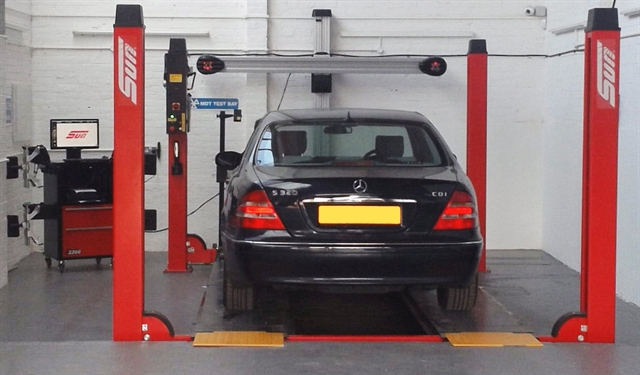Find out how easy it is to add wheel alignment checks into your daily routine - opening up a new revenue stream for you and increasing customer satisfaction.
Around two and a half million cars a year fail their MOT tests due to tyre-related issues such as suspension and steering.
Alignment checks are necessary in these circumstances and can often lead to extra correctional work being required – so that’s millions of opportunities to earn extra revenue.
This guide from our industry experts at Snap-on looks at how you can make wheel alignment work for your business.
How should you incorporate wheel alignment into your routine?
A full four-wheel alignment reading can be gathered in minutes so if you’re already working on a vehicle, it is a swift process to run an alignment check – at no cost to your customer – then show them the results.
The alignment readings can be displayed on an additional screen away from the workshop, such as in the reception area, which can then be used to demonstrate to the customer the corrections that need to be made.
They can also be printed out and given to the customer for them to take away.
Physically showing a customer what is wrong is a really powerful tool, especially when you can also explain the problems caused by misalignment and the benefits of having the alignment corrected.
Improper wheel alignment increases a vehicle’s fuel consumption and also increases tyre wear, subsequently reducing safety on the road.
A full four-wheel alignment reading can be gathered in minutes so if you’re already working on a vehicle, it is a swift process to run an alignment check – at no cost to your customer – then show them the results.
 |
| Take advantage of a growing market by offering wheel alignment services to your customers. |
Wheel alignment tips and tricks
Prior to completing a wheel alignment check, it is very important to carry out an inspection of the vehicle.
You should do the following:
- Check that the tyres are of the correct size, specification, pressure and tread depth
- Check tyres for damage such as cuts, bulges or other imperfections
- Check the tyre wear pattern for any abnormalities - under normal wear, the tread would be worn evenly all around the tyre so any uneven wear could be the result of misalignment
- Check that wheel rims are not damaged
- Check that there is no suspension sag, drop or broken springs
- Check that the ride height is correct, where specified
- Check that no undue play exists in the steering or suspension systems including bearings and bushes
You should also carry out a test drive of the vehicle. Where possible choose a quiet, flat road, or the crown of the road, and check for any of these potential issues:
- Steering pull to the left or right
- Steering wheel position
- Steering self-centring after a turn
- Abnormal steering or suspension noises
- Steering effort
- Steering play
- Wheel balance
Depending on the results of an inspection and test drive, emphasis can be given to specific areas of the wheel alignment check.
For example, a misaligned steering wheel together with a ‘nervous’ feel to the vehicle may be caused by incorrect rear toe giving an unacceptable thrust angle.
It is important to remember that forces inherent in tyres such as ply steer and conicity, can cause a vehicle to pull/drift to the left or right.
This can happen even if all the alignment readings are within the manufacturer’s specifications.
Wheel alignment equipment to choose
Because four-wheel alignment measures data from at least 12 angles and checks that against the information supplied by the vehicle manufacturer, a customer can be assured that it is a far more accurate method of correcting their vehicle than the older two-wheel alignment systems, often known as ‘tracking’.
The Snap-on 3D four-wheel alignment systems take into account wheel rim run-out compensation, giving increased accuracy to the readings, and they also allow toe adjustments of individual wheels to ensure that the steering wheel is set straight, while alterations to other elements such as camber and caster can really add to the service and results a customer will experience.
They can also be incorporated as part of an MOT bay installation, providing dual revenue opportunities to workshops as the lift can be used for alignment work when it is not being used for testing.